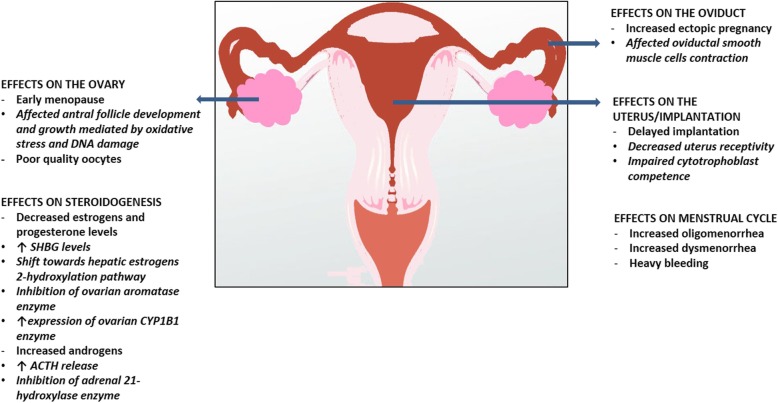Fig. 1.
Graphical summary of the main effects of smoking on the reproductive function in women. Smoking affects nearly all domains of the female reproductive function. Smoking is associated to early menopause and reduced levels of ovarian reserve markers, mediated by an impairment of antral follicle development and growth, due to supportive granulosa cells-directed oxidative stress and DNA damage, resulting in cytotoxicity and production of poor quality oocytes. Smoking is associated to lower estrogens and progesterone and higher androgens levels, effects mediated by both ovarian and extra-ovarian actions, including: increased levels of sex hormone binding globulin (SHBG); increased hepatic production of estrogens metabolites with minimal estrogenic activity by pushing the estrogens 2-hydrohylation pathway; inhibition of aromatase enzyme; increased expression of ovarian CYP1B1 enzyme; increased levels of adrenocorticotropic hormone (ACTH); inhibition of adrenal 21-hydrohylase enzyme. Smoking is associated to an increased risk of ectopic pregnancy, mediated by affected oviductal smooth muscle contractility, to delayed implantation, mediated by reduced endometrium receptivity and cytotrophoblast proliferation, migration and invasion, and to an increased risk of oligomenorrhea, dysmenorrhea and menstrual symptoms, although apparently not determined by ovulatory dysfunction

